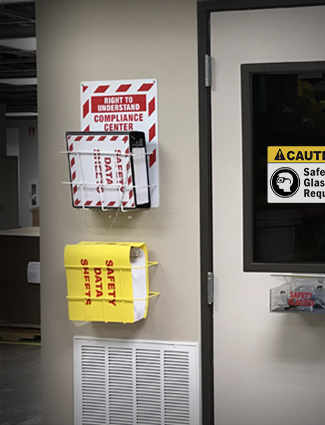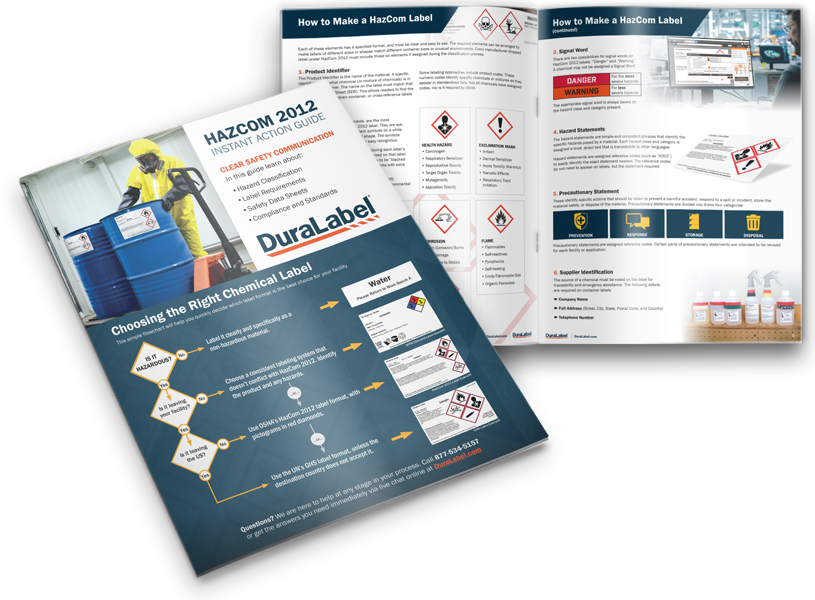Tips for Better Chemical Safety Management

Fiery explosions that cause an injury or death are just some of the worst-case scenarios when a workplace in any industry does not maintain safe chemical processes. Each year, chemical process violations make for thousands of OSHA citations, and can even lead to accidental releases of hazardous chemicals. Workplaces can easily manage chemicals with a comprehensive program that includes safety best practices and visual communication.
Chemical Safety Violations
There are several different OSHA rules for hazardous chemicals. Typically, workplace chemical safety violations fall under hazard communication. In 2018, there were 4,522 OSHA citations for hazard communication, ranking it among the top 10 most frequent citations.
"Employers are required to conduct regular inspections and address potential hazardous conditions associated with chemical processes to prevent catastrophic events from occurring," said Principal Deputy Assistant Secretary of Labor for Occupational Safety and Health Loren Sweatt after a chemical explosion at a Texas factory in November 2019. "OSHA has extensive resources available to help employers and workers understand the requirements for process safety management."
The COVID-19 situation is introducing new chemical hazards for some businesses, which calls for an even greater understanding of chemical safety. OSHA cautions businesses that are about to reopen to be aware. Employers should review and address chemical process safety issues since some chemicals might have degraded or expired. Also, workplaces can transition to safer chemicals. Here are several tips to help workplaces re-examine and step up safety programs when it comes to chemical compliance.
- Process Hazard Analysis: Examine the steps of using chemicals for work tasks and permissible exposure limits. Consider the kinds of failures or accidents that can occur and ways to make the chemical task safer using the hierarchy of controls. Identify, evaluate, and control the risks of chemical hazards.
- Inventory, Storage, and Disposal: Maintain safety data sheets. Document details of the chemicals in use in the facility using an SDS for each chemical.
- Manage Exposure Risk: Put in place measures to detect chemical vapors and monitor pressures and temperatures for chemicals. Always ensure proper ventilation.
- Emergency Response: Keep eyewash, emergency kits, and other stations clean and in working order. Develop and implement procedures for emergency shutdown and other emergency incidents. This information is for workers as well as emergency responders.
- Check Equipment: Inspect and test process vessel and piping components. Evaluate if equipment is interconnected with or near equipment that uses chemicals.
- Communication and Training: Employees need to understand and know workplace chemical plans. Make training and education routine. Keep chemical signs and labels up to date and place them where they will be easily seen and understood.
Step Up Safety
Chemical safety is important to save lives, and to protect the workplace and the environment. Part of ensuring the safe and compliant use of chemicals in the workplace is to keep safety in mind from start to finish. Before working with a chemical, employees should know all of its relevant hazards, understand how to protect themselves during its use and in case of an accident, and be familiar with the company's expectations for handling and storing it safely. Think about what can happen and the consequences during routine audits and inspections, and use the hierarchy of controls to reduce risks. Keep proper respiratory protection and other personal protective equipment in working order. Enhance safety and meet compliance through signs and labels. Outline equipment and safe distancing for chemicals using floor marking.
Related Resources

The Importance of Chemical Risk Assessments
Chemicals are in use in workplaces every day. It is important to follow and maintain chemical safety for ...
Read
GHS-Compliance: Safe and Effective Storage of Hazardous Chemicals
The Importance of the GHS When working with and storing hazardous chemicals, steps must be taken to ensure ...
Read
HazCom Plans Crucial in Preventing Employee Exposure
Several workplace chemical exposures have prompted OSHA to remind companies of proper respirator and ...
Read.png)






